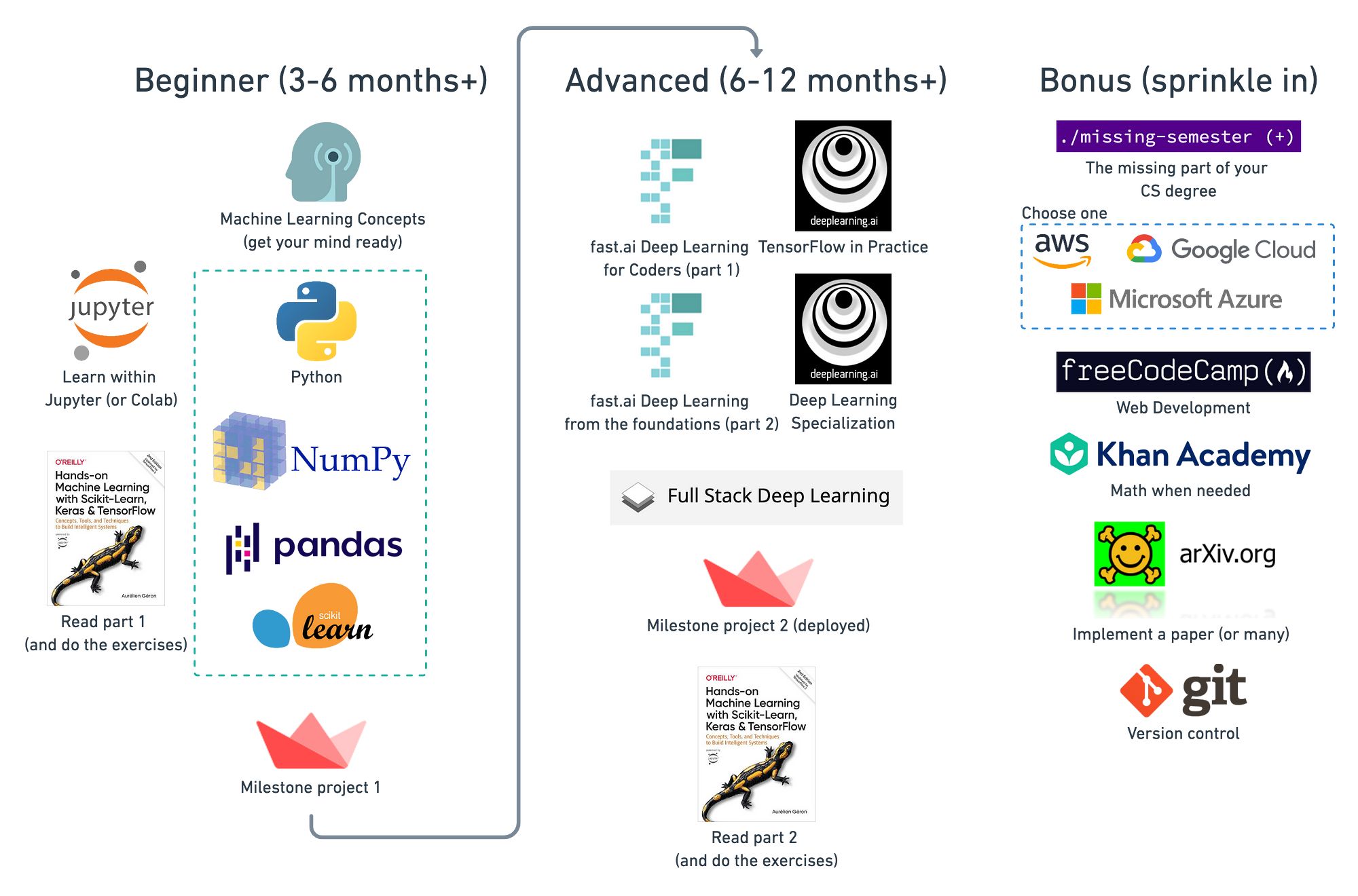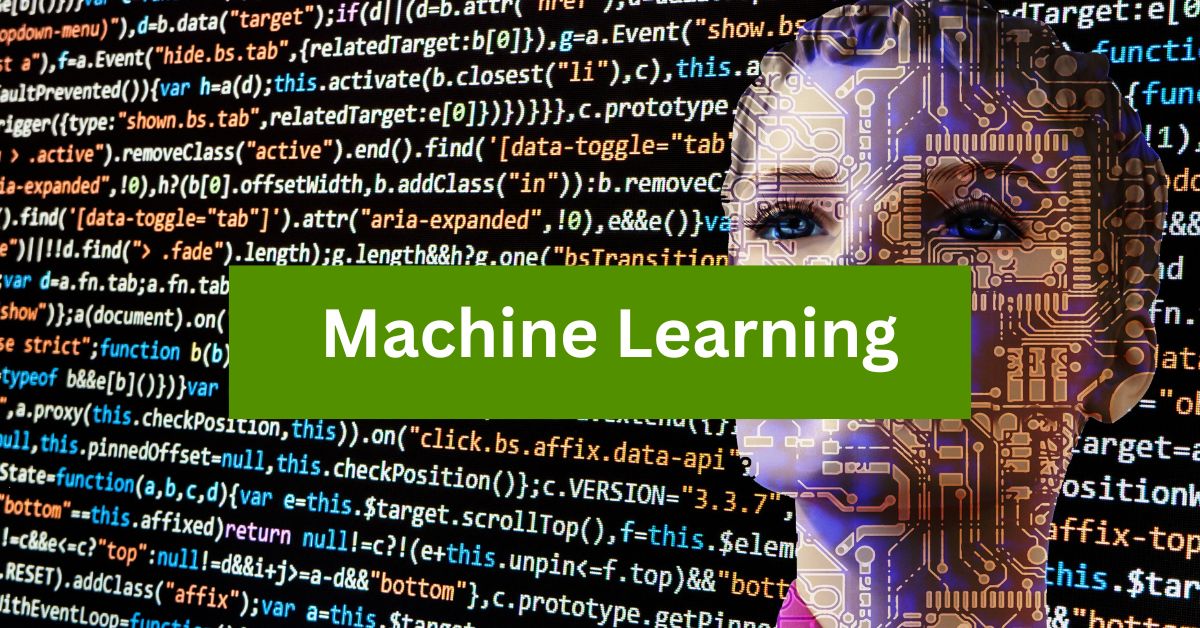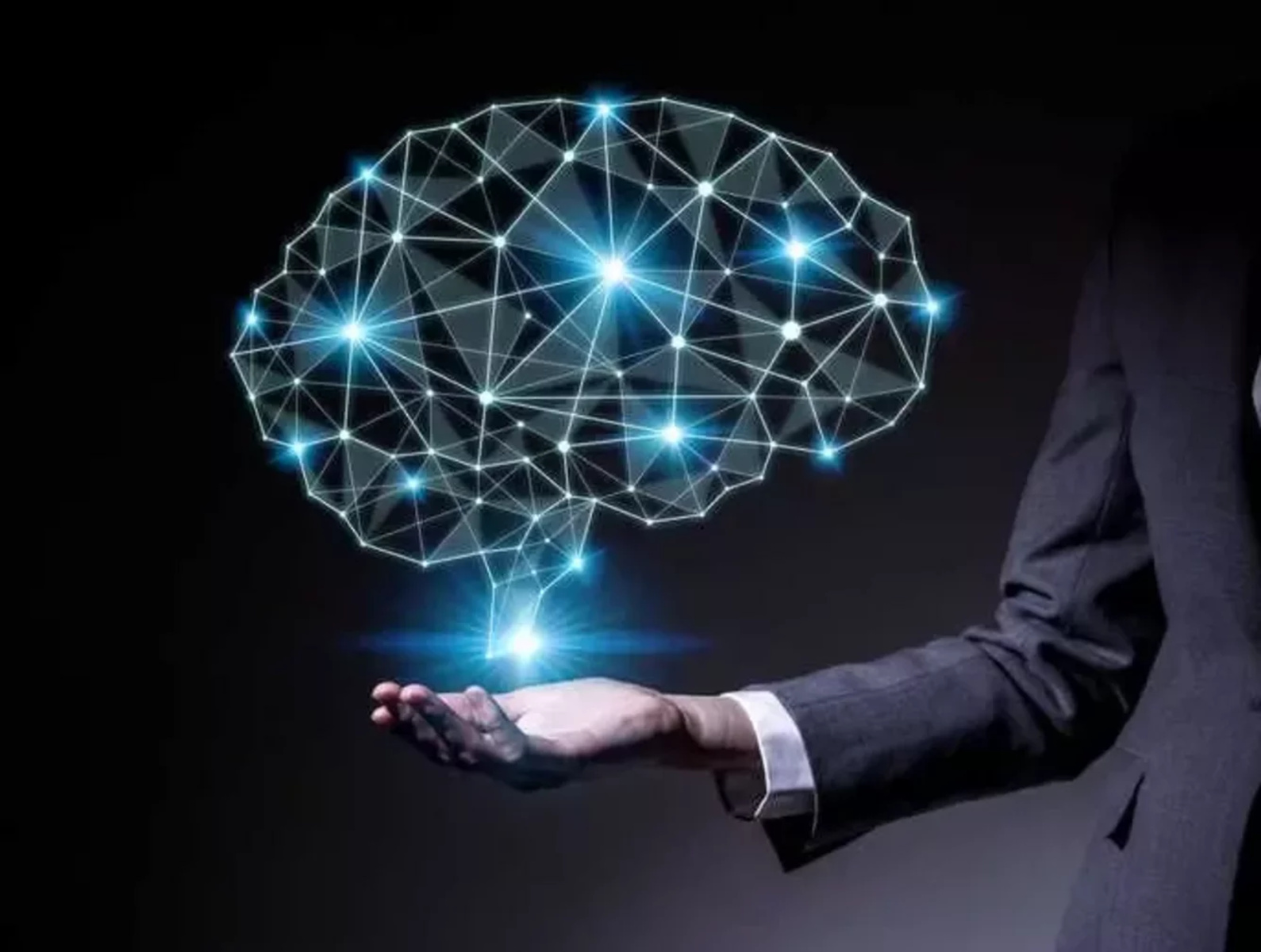Introduction
Welcome to the world of machine learning, where algorithms and data come together to create intelligent systems that can learn from experiences and improve over time. In today’s fast-paced technological landscape, machine learning has emerged as a powerful tool with applications in various industries, ranging from finance and healthcare to marketing and entertainment.
Machine learning is a branch of artificial intelligence that focuses on the development of algorithms that can learn and make predictions or decisions without being explicitly programmed. This means that machines can analyze vast amounts of data, identify patterns, and draw meaningful insights to solve complex problems.
Whether you’re a software developer, a data scientist, or simply someone looking to expand their knowledge, understanding machine learning can offer a multitude of benefits. It opens up opportunities to build intelligent applications, make data-driven decisions, and stay ahead in the rapidly evolving digital landscape.
However, embarking on the journey of learning machine learning can be overwhelming. With the vast amount of concepts, algorithms, and techniques involved, it is vital to have a clear roadmap and a solid foundation to build upon.
In this article, we will explore the various aspects of learning machine learning and the time required to become proficient in this field. We will delve into the fundamental concepts, the skills required, the algorithms involved, and the practical application of machine learning models.
Keep in mind that the time it takes to learn machine learning will vary depending on your background, dedication, and prior knowledge. This article aims to provide a general guideline to help you navigate the learning process and set realistic expectations as you embark on your journey into the fascinating world of machine learning.
Understanding Machine Learning Basics
Before diving into the intricacies of machine learning, it is essential to grasp the fundamental concepts and principles that underpin it. At its core, machine learning is all about enabling computers to learn from data and make accurate predictions or decisions.
Machine learning can be broadly classified into three categories: supervised learning, unsupervised learning, and reinforcement learning. In supervised learning, the algorithm is trained using labeled data, where the input and the desired output are provided. The algorithm learns to map the input to the output by finding patterns and relationships in the data. In unsupervised learning, on the other hand, the algorithm is presented with unlabeled data, and it must discover any underlying structure or patterns on its own. Reinforcement learning involves an agent learning through trial and error interactions with an environment, receiving feedback in the form of rewards or punishments.
To make use of machine learning algorithms, you need to have a strong understanding of the underlying mathematics. Linear algebra, calculus, and statistics play a crucial role in building and training models. Linear algebra is used for matrix operations and solving systems of equations, calculus helps in optimization and error minimization, and statistics provides the tools for analyzing and interpreting the data.
Another important aspect of machine learning is feature engineering. Features are the input variables that are used to make predictions or decisions. Properly identifying and selecting the right features can significantly impact the performance of a machine learning model. Feature engineering involves techniques such as dimensionality reduction, normalization, and encoding categorical variables.
It’s also essential to have programming skills to implement and deploy machine learning models. Python is widely used in the machine learning community due to its simplicity, versatility, and the availability of powerful libraries such as scikit-learn and TensorFlow. Understanding data manipulation, visualization, and algorithm implementation in Python will greatly facilitate your journey into machine learning.
Before we explore different machine learning algorithms and techniques, it’s crucial to highlight the significance of exploratory data analysis (EDA). EDA involves analyzing and visualizing the data to gain insights, identify patterns, and detect outliers or missing values. This step is instrumental in understanding the data and ensuring its quality before feeding it to machine learning algorithms.
In the next sections, we will delve deeper into supervised and unsupervised learning algorithms, as well as other advanced topics like deep learning, model evaluation, and continuous learning.
Mathematics for Machine Learning
Mathematics forms the backbone of machine learning, providing the necessary tools and concepts to understand and build effective models. Having a solid foundation in mathematical principles can significantly enhance your understanding and proficiency in machine learning.
One of the key areas of mathematics in machine learning is linear algebra. Linear algebra is used to represent and manipulate data as vectors and matrices. Vectors can represent features or data points, while matrices are used to represent datasets. Understanding operations such as vector addition, scalar multiplication, dot product, and matrix operations like matrix multiplication and inversion are essential for implementing and optimizing machine learning algorithms.
Calculus is also crucial in machine learning, particularly in optimization algorithms. Optimization involves finding the best set of parameters to minimize the error or loss function of a model. Concepts like derivatives, gradients, and partial derivatives are used to update model parameters and improve model performance. Additionally, understanding concepts like optimization algorithms such as gradient descent can help in fine-tuning models.
Statistics is another fundamental branch of mathematics in machine learning. Statistical concepts such as probability, distributions, hypothesis testing, and confidence intervals are used to analyze data and make inferences. Understanding these concepts is crucial for model evaluation, selecting appropriate algorithms, and interpreting the results.
A grasp of probability theory and statistics allows you to effectively handle uncertainty, make sound decisions based on data, and evaluate the performance of machine learning models. Additionally, statistical concepts are heavily utilized in feature selection, dimensionality reduction, and handling imbalanced datasets.
Having a solid understanding of mathematics, specifically linear algebra, calculus, and statistics, will greatly enhance your ability to comprehend and implement various machine learning algorithms. It will also enable you to dive deeper into advanced topics such as neural networks and deep learning, as these techniques heavily rely on mathematical concepts.
While proficiency in mathematics is essential for machine learning, it’s worth noting that you don’t need to be a mathematics prodigy to succeed in this field. Many online resources, tutorials, and courses are available to help you strengthen your mathematical foundation for machine learning. With practice and dedication, you can develop the necessary mathematical skills and leverage them effectively in the world of machine learning.
Programming Skills for Machine Learning
Programming skills are a vital component of machine learning, as they enable you to implement, train, and deploy machine learning models effectively. Python, with its simplicity, versatility, and powerful libraries, is the most commonly used programming language in the machine learning community.
Python provides a wide range of libraries that make machine learning tasks more accessible. One of the most popular libraries is scikit-learn, which offers a comprehensive set of tools for data preprocessing, feature engineering, model selection, and evaluation. Another widely used library is TensorFlow, which provides a framework for building and training deep learning models. Other notable libraries include Keras, PyTorch, and Pandas, which are used for various machine learning tasks, such as neural networks, data manipulation, and analysis.
Being proficient in Python allows you to manipulate and preprocess data efficiently, create visualizations, and implement machine learning algorithms seamlessly. Understanding concepts like data structures, control flow, and functions in Python is fundamental for writing clean and scalable code.
Moreover, having a solid grasp of version control systems, such as Git, is essential for collaboration and managing different versions of your code. This helps in keeping track of changes, collaborating with team members, and ensuring reproducibility of your experiments.
While Python is the language of choice for most machine learning tasks, other languages like R and Julia also have their niche in specific domains. R, for example, is commonly used for statistical analysis and visualization, while Julia is known for its high-performance computing capabilities. Depending on your specific interests and needs, exploring these languages may complement your machine learning skill set.
Additionally, understanding databases and SQL is crucial, as machine learning often involves working with large datasets. Being able to efficiently extract, transform, and load data from relational databases can streamline the machine learning pipeline.
Continuous learning and staying up-to-date with the latest programming libraries, frameworks, and techniques is also important in the fast-evolving field of machine learning. Participating in online communities, attending webinars, and reading relevant blogs and research papers can help you stay ahead and apply cutting-edge techniques in your projects.
While programming skills are essential for machine learning, it’s important to strike a balance between learning programming concepts and understanding the underlying mathematical and statistical principles. Blending these skills together will enable you to harness the full potential of machine learning algorithms and build intelligent systems.
Exploratory Data Analysis
Exploratory Data Analysis (EDA) is a crucial step in the machine learning process that involves analyzing and visualizing the data to gain insights, detect patterns, and identify potential issues. EDA allows you to understand the characteristics of the data, assess its quality, and make informed decisions before feeding it into machine learning algorithms.
One of the primary goals of EDA is to understand the distribution of the data. This involves analyzing summary statistics like mean, median, standard deviation, and skewness. Visualizations, such as histograms, box plots, and scatter plots, provide a more intuitive understanding of how the data is distributed and the presence of outliers or anomalies.
Evaluating the relationships between variables is another important aspect of EDA. Correlation analysis helps to identify the strength and direction of relationships between continuous variables. Heatmaps and scatterplot matrices are commonly used visualizations to represent these relationships. For categorical variables, bar plots and contingency tables are useful in understanding the distribution and potential associations.
Identifying and handling missing data is also a critical part of EDA. Missing data can impact the performance and reliability of machine learning models. Techniques like imputation, where missing values are replaced with estimated values, can be used to address missing data. EDA helps in understanding the patterns and extent of missing data and informs the imputation strategy.
Outlier detection is another important aspect of EDA. Outliers can significantly impact the performance of machine learning models and distort the analysis. Box plots, scatter plots, and statistical methods like z-score and modified z-score can assist in identifying and handling outliers.
Feature engineering is often performed during the EDA phase. This involves transforming and manipulating variables to uncover additional patterns or make them more suitable for machine learning algorithms. Techniques like log transformations, scaling, and one-hot encoding are applied to enhance the predictive power of the features.
EDA also involves identifying potential biases or imbalances in the data. In classification tasks, for example, imbalanced classes can lead to biased predictions. Visualizations and analysis of class distributions can help identify potential issues and guide the selection of appropriate techniques to address them.
Ultimately, a thorough EDA enables you to gain a deeper understanding of the data, identify potential challenges, and ensure data quality before applying machine learning algorithms. It provides insights to guide feature selection, preprocessing steps, and the choice of appropriate techniques and models.
By investing time and effort in exploring and understanding the data through EDA, you can ensure the success and reliability of your machine learning projects.
Supervised Learning Algorithms
Supervised learning is a branch of machine learning where the algorithm learns from labeled data to make accurate predictions or decisions. In supervised learning, the input data is accompanied by corresponding output labels, providing a clear framework for training and evaluation.
There are various supervised learning algorithms, each suited for different types of problems and data. Here, we will discuss a few commonly used supervised learning algorithms:
1. Linear Regression: Linear regression is used for predicting a continuous output variable based on one or more input features. It fits a linear equation to the data by minimizing the sum of squared differences between the predicted and actual values. Linear regression is widely used in various fields, such as economics, finance, and social sciences.
2. Logistic Regression: Logistic regression is used for binary classification, where the output variable has two classes. It models the relationship between the input features and the probability of belonging to a particular class using a logistic function. Logistic regression is commonly used in medical research, marketing, and credit scoring.
3. Decision Trees: Decision trees are versatile algorithms used for both classification and regression tasks. They create a tree-like model of decisions and their possible consequences by splitting the data based on feature values. Decision trees are intuitive, easy to interpret, and can handle both numerical and categorical features.
4. Random Forests: Random forests are an ensemble learning method that combines multiple decision trees. Each tree in the random forest provides predictions, and the final prediction is determined by majority voting or averaging. Random forests are known for their robustness, ability to handle high-dimensional data, and resistance to overfitting.
5. Support Vector Machines (SVM): SVM is a powerful algorithm used for both classification and regression tasks. It maps data to a high-dimensional feature space and finds a hyperplane that maximally separates the different classes or captures the regression trend. SVM is effective in handling complex data and works well with small to medium-sized datasets.
6. Neural Networks: Neural networks are a class of deep learning algorithms inspired by the structure and functioning of the human brain. They consist of interconnected layers of artificial neurons that learn patterns from data. Neural networks excel at complex pattern recognition tasks and have achieved state-of-the-art performance in areas such as image and speech recognition.
These are just a few examples of the many supervised learning algorithms available. Choosing the right algorithm depends on the nature of the problem, the characteristics of the data, and the desired outcome. Experimenting with different algorithms and evaluating their performance will help in selecting the most suitable one for your specific task.
It’s worth noting that the success of supervised learning algorithms relies heavily on the quality and representativeness of the labeled training data. Therefore, data preprocessing, feature engineering, and careful selection of evaluation metrics are essential for achieving optimal results.
Unsupervised Learning Algorithms
Unsupervised learning is a branch of machine learning where the algorithm learns patterns and discovers structure in unlabeled data. Unlike supervised learning, unsupervised learning algorithms do not have access to predefined labels or outputs. Instead, they aim to identify inherent patterns, relationships, and clusters within the data.
There are several unsupervised learning algorithms commonly used in machine learning:
1. Clustering: Clustering algorithms group similar data points together based on their similarity or proximity. K-means clustering is a popular algorithm that assigns data points to clusters with the goal of minimizing the within-cluster sum of squares. Hierarchical clustering builds a tree-like structure to represent the relationships between data points. Clustering is widely used for customer segmentation, image processing, and anomaly detection.
2. Dimensionality Reduction: Dimensionality reduction techniques reduce the number of features in a dataset while retaining essential information. Principal Component Analysis (PCA) is a popular method that identifies the linear combinations of variables that capture the maximum variance in the data. Another technique, t-SNE, is useful for visualizing high-dimensional data in lower dimensions while preserving the similarity between data points. Dimensionality reduction facilitates visualization, removes noise, and can improve the performance of machine learning algorithms.
3. Association Rule Learning: Association rule learning identifies relationships and patterns in transactional data, often used in market basket analysis. The Apriori algorithm, for example, discovers frequent itemsets and generates association rules that capture the dependencies between items. Association rule learning enables businesses to understand customer behavior, optimize product placement, and enhance cross-selling strategies.
4. Anomaly Detection: Anomaly detection algorithms identify and flag unusual patterns or outliers in the data. These algorithms learn the normal behavior of the data and detect deviations that imply anomalies. Anomaly detection is useful in fraud detection, network security, and quality control. Popular techniques include statistical methods like the Z-score and Mahalanobis distance, as well as machine learning algorithms such as Isolation Forest and One-Class SVM.
5. Generative Models: Generative models learn the underlying distribution of the data and generate new samples that resemble the original distribution. Gaussian Mixture Models (GMM) and Variational Autoencoders (VAE) are examples of generative models. These models find applications in image generation, data synthesis, and data augmentation.
Unsupervised learning algorithms provide valuable insights into the underlying structure of data and can uncover hidden patterns that may not be easily identifiable with human intuition. However, evaluating the performance of unsupervised learning algorithms can be more challenging compared to supervised learning since there are no explicit labels to measure against. Techniques such as internal evaluation criteria, domain expertise, and visualizations can assist in evaluating and interpreting the results.
By leveraging unsupervised learning algorithms, data scientists can gain a deeper understanding of complex datasets, discover novel patterns, and generate valuable insights that can inform decision-making processes.
Deep Learning and Neural Networks
Deep learning has revolutionized the field of machine learning by enabling the creation of complex models that can learn and extract meaningful representations from large volumes of data. At the heart of deep learning are neural networks, which mimic the structure and functioning of the human brain.
Neural networks consist of interconnected layers of artificial neurons, called perceptrons, which process and transmit information. Each neuron takes in input from the previous layer, applies a mathematical transformation, and passes the output to the next layer. The layers are typically organized into an input layer, one or more hidden layers, and an output layer.
Deep learning models, often referred to as deep neural networks, become “deep” by having multiple hidden layers. These additional layers allow for the extraction of progressively more abstract features and representations of the data, leading to better performance and more sophisticated understanding.
One of the main advantages of deep learning is its ability to automatically learn hierarchical representations from raw data, eliminating the need for manual feature engineering. This is accomplished through the process of training, where the neural network learns to adjust its parameters to minimize a predefined objective function, typically through a process called backpropagation.
Deep learning models have achieved groundbreaking results in a wide range of domains, including computer vision, natural language processing, speech recognition, and recommendation systems.
Convolutional Neural Networks (CNNs) are a type of neural network that excel at processing grid-like data, such as images. CNNs leverage the properties of convolution operations and pooling layers to effectively capture spatial and structural information in images.
Recurrent Neural Networks (RNNs) are designed to handle sequential data, making them particularly suited for tasks like natural language processing and speech recognition. RNNs have memory cells that allow them to retain information from previous time steps, enabling the modeling of temporal dependencies.
Long Short-Term Memory (LSTM) and Gated Recurrent Units (GRUs) are specialized types of RNNs that are capable of learning and remembering long-range dependencies, making them useful for tasks that involve longer sequences of data.
However, training deep neural networks can be computationally intensive and requires a large amount of labeled training data. Additionally, overfitting, where the model learns the training data too well and fails to generalize to new data, is a common challenge in deep learning.
Despite the challenges, deep learning has propelled advancements in various fields and continues to push the boundaries of what is possible in machine learning. Ongoing research and advancements in hardware, such as graphics processing units (GPUs) and specialized deep learning processors, contribute to the continued growth and adoption of deep learning in real-world applications.
As deep learning evolves, it opens up exciting possibilities for solving complex problems and creating intelligent systems that can perceive, understand, and learn from the world around us.
Reinforcement Learning
Reinforcement learning is a branch of machine learning that focuses on training agents to make sequential decisions in an environment to maximize cumulative rewards. Unlike supervised and unsupervised learning, reinforcement learning does not rely on labeled data. Instead, the agent learns through trial and error interactions with the environment, receiving feedback in the form of rewards or punishments.
Reinforcement learning is inspired by the concept of conditioning in psychology, where positive and negative reinforcements shape an organism’s behavior. The agent learns by taking actions in the environment, observing the resulting state transitions, and receiving rewards or penalties based on the outcomes.
The key components of reinforcement learning are:
1. Agent: The entity that interacts with the environment and makes decisions.
2. Environment: The world in which the agent operates and receives feedback.
3. State: The current scenario or situation in the environment.
4. Action: The decision or choice made by the agent based on the current state.
5. Reward: The feedback or evaluation signal received by the agent as a consequence of its action.
The goal of the agent is to learn a policy, a mapping from states to actions, that maximizes the cumulative rewards over time. The agent explores the environment by taking actions, gathering experience, and updating its policy based on the observed rewards. This process is typically guided by algorithms like Q-learning, Monte Carlo methods, or policy gradients.
Reinforcement learning has been successfully applied to a variety of tasks, including game playing, robotics, recommendation systems, and optimization problems. In game playing, reinforcement learning algorithms have achieved remarkable results, surpassing human-level performance in games like Go, chess, and poker.
One of the challenges in reinforcement learning is the exploration-exploitation dilemma. The agent must strike a balance between exploring new actions and exploiting the actions that have yielded high rewards in the past. Strategies like epsilon-greedy and Thompson sampling are commonly used to address this challenge.
Another important concept in reinforcement learning is the notion of value. Value functions estimate the long-term desirability of a state or action. The Value Function Approximation (VFA), often implemented using deep neural networks, allows the agent to generalize its knowledge and make decisions in new and unseen scenarios.
Reinforcement learning offers promising possibilities for training intelligent systems that can learn and adapt in dynamic environments. The interplay between exploration, rewards, and the continuous learning process guides the agent in improving its decision-making abilities over time, leading to more efficient and effective actions.
Model Evaluation and Selection
Model evaluation and selection play a critical role in the machine learning process, ensuring that the chosen model performs well on unseen data and can generalize to new instances. Model evaluation involves assessing the performance of different models using appropriate metrics and techniques.
One common approach to evaluating models is using a holdout or validation set. The dataset is split into a training set and a holdout set. The model is trained on the training set and then evaluated on the holdout set, which provides an estimate of its performance on unseen data. The holdout set should be representative of the data the model will encounter in real-world scenarios.
Accuracy is a commonly used evaluation metric for classification tasks, which measures the proportion of correctly classified instances. However, accuracy alone may not be sufficient in imbalanced datasets with a disproportionate number of instances in different classes. Other evaluation metrics like precision, recall, and F1-score provide a more comprehensive view of the model’s performance.
For regression tasks, evaluation metrics like mean absolute error (MAE), mean squared error (MSE), and R-squared are commonly used. MAE represents the average absolute difference between predicted and actual values, while MSE represents the average squared difference. R-squared measures how well the model fits the data compared to a baseline model.
Cross-validation is another powerful technique for model evaluation. It involves partitioning the data into multiple subsets or folds. The model is trained and evaluated on each fold, with each fold serving as the holdout set once. Cross-validation provides a more robust estimate of the model’s performance by reducing the variance associated with a single train-test split.
Hyperparameter tuning is an integral part of model selection. Hyperparameters are configuration settings that are not learned from the data but affect the learning process. Techniques like grid search, random search, and Bayesian optimization are commonly used to search for the optimal combination of hyperparameters. The choice of hyperparameters can significantly impact the model’s performance and generalization ability.
Additionally, evaluation metrics should be chosen carefully based on the domain and the specific requirements of the problem. For example, in a medical diagnosis task, false negatives (missed diagnoses) might be more critical than false positives, leading to a preference for higher recall over precision.
It’s important to avoid overfitting during model evaluation. Overfitting occurs when a model becomes too complex and starts to learn the noise or idiosyncrasies of the training data, resulting in poor performance on unseen data. Techniques like regularization, early stopping, and model complexity control should be employed to mitigate overfitting and improve generalization.
Model evaluation is an ongoing process, and the selected model may need to be re-evaluated periodically as new data becomes available or when the requirements of the problem change. Evaluating the model’s performance in real-world scenarios is crucial to ensure its effectiveness and reliability.
Deployment and Productionization of Models
Once a machine learning model has been developed and evaluated, the next step is to deploy and integrate it into a production environment where it can provide value and make predictions on new, unseen data. Deployment and productionization involve several considerations to ensure the model’s performance, scalability, and reliability.
One key aspect of deployment is the choice of infrastructure. Depending on the scale of the deployment and the resources required, different deployment options can be considered, such as on-premises servers, cloud-based solutions, or edge devices. The infrastructure should be able to handle the computational demands of the model and provide necessary resources for processing and storage.
For web-based applications, an important consideration is incorporating the machine learning model into a production pipeline. This involves implementing the necessary code and APIs to interact with the model, allowing users to input data and receive predictions seamlessly. Proper integration with existing software and systems, if applicable, is crucial for smooth operation and data flow.
It is also essential to consider model monitoring and maintenance in a production environment. Monitoring the performance of the deployed model helps detect any drift or degradation in its accuracy over time. Continuous monitoring can be achieved through logging and tracking key metrics, applying anomaly detection techniques, and implementing a feedback loop for retraining or updating the model when necessary.
Ensuring privacy and security is a significant concern when deploying machine learning models that deal with sensitive data. Encryption, access controls, and secure data transmission protocols should be implemented to protect both data in transit and at rest. Compliance with industry regulations and standards should also be taken into consideration.
Version control and managing model updates are crucial for reliable and reproducible deployments. As models evolve and new data becomes available, it may be necessary to retrain, fine-tune, or update models. Proper version control practices, documentation, and reproducibility enable the tracking and management of model versions along with associated data and code.
Scalability is another critical factor in productionizing machine learning models. The infrastructure should be designed to handle increased usage, varying workloads, and potential spikes in demand. Techniques like distributed computing, load balancing, and auto-scaling can be employed to ensure the model can handle a high volume of requests efficiently.
In addition to technical considerations, effective communication between the data science team and the stakeholders also plays a vital role. Clear documentation, documentation, well-defined APIs, and regular communication ensure that the deployed model meets the requirements and expectations of the stakeholders.
Deployment and productionization of machine learning models require a multidisciplinary approach, involving collaboration between data scientists, software engineers, IT professionals, and other relevant stakeholders. By considering infrastructure, monitoring, privacy, security, scalability, version control, and effective communication, the deployment process can be streamlined, ensuring successful integration of machine learning into real-world applications.
Continuous Learning and Professional Development
In the rapidly evolving field of machine learning, continuous learning and professional development are crucial to stay current, adapt to emerging trends, and enhance your expertise. As new techniques, algorithms, and tools emerge, it is essential to constantly update your knowledge and skills to remain competitive.
Here are some key aspects of continuous learning and professional development in machine learning:
Staying Updated: Keeping up with the latest research, publications, and advancements in machine learning is vital. Subscribing to relevant journals, following influential researchers and organizations on social media, and participating in online communities and forums can help you stay abreast of new developments.
Online Courses and Tutorials: Online platforms offer a wealth of courses and tutorials that cover various aspects of machine learning. Platforms like Coursera, Udemy, and edX provide comprehensive courses taught by industry experts and renowned academics, allowing you to acquire new skills and deepen your understanding at your own pace.
Participating in Challenges and Competitions: Engaging in machine learning challenges and competitions, such as Kaggle, allows you to test your skills, work on real-world problems, and learn from other participants. These platforms often offer datasets, forums, and leaderboard rankings, exposing you to diverse approaches and fostering healthy competition.
Attending Conferences and Workshops: Conferences and workshops provide unique opportunities to learn from industry leaders, network with peers, and gain insights into the latest trends and breakthroughs in machine learning. Attending events like NeurIPS, ICML, and CVPR can expose you to cutting-edge research and foster collaborations.
Collaboration and Knowledge Sharing: Engaging with other professionals in the field through collaborations, research projects, or open-source contributions is an effective way to learn from their experiences and expand your knowledge. Participating in discussion forums, online communities, and contributing to open-source projects can facilitate active learning and foster professional growth.
Practical Application and Projects: Implementing machine learning models and working on real-world projects is an invaluable way to apply your skills and gain hands-on experience. Building personal projects, collaborating on open-source projects, or working on real-world problems within your organization can provide valuable insights and practical knowledge.
Reading Research Papers: Research papers are a primary source of new knowledge and advancements in machine learning. Reading and understanding academic papers can give you deeper insights into novel algorithms, techniques, and frameworks, allowing you to leverage state-of-the-art methods in your work.
Continual Development of Fundamental Skills: While staying updated on new advancements, it’s crucial not to overlook the fundamental skills that underpin machine learning. Continually honing your mathematical, statistical, and programming skills is essential for building a strong foundation and understanding the core principles behind machine learning algorithms.
Continuous learning and professional development are ongoing processes that should be embraced throughout your machine learning journey. By investing time and effort into staying updated, upskilling, participating in challenges, attending conferences, collaborating with peers, and engaging in practical application, you can enhance your expertise, stay at the forefront of the field, and contribute to the advancement of machine learning.
Conclusion
Machine learning offers incredible opportunities to solve complex problems, make data-driven decisions, and build intelligent systems. Throughout this article, we have explored various aspects of machine learning, from understanding the basics and the importance of mathematics, to programming skills, exploratory data analysis, and the different types of algorithms.
Supervised learning algorithms enable us to make predictions and decisions based on labeled data, while unsupervised learning algorithms allow us to uncover patterns and relationships in unlabeled data. Deep learning, with its powerful neural networks, has pushed the boundaries of what is possible in machine learning, especially for tasks involving images, speech, and natural language processing.
It’s crucial to emphasize the importance of model evaluation, selection, and deployment. Proper evaluation ensures that models perform well on unseen data and can be effectively integrated into real-world applications. Additionally, continuous learning and professional development are vital in such a rapidly evolving field, enabling individuals to stay updated, acquire new skills, and contribute to the advancement of machine learning.
As you embark on your journey to learn machine learning or sharpen your existing skills, remember that practice, experimentation, and hands-on projects are key to mastery. Building a strong foundation in mathematics, programming, and statistical concepts will provide a solid framework for understanding and implementing various algorithms.
Machine learning has the potential to reshape industries, drive innovation, and unlock new possibilities. By embracing continuous learning, staying curious, and collaborating with others in the field, you can contribute to the exciting advancements and applications in machine learning. So, follow your passion, embark on this journey of learning, and be part of the incredible future that machine learning holds.

























